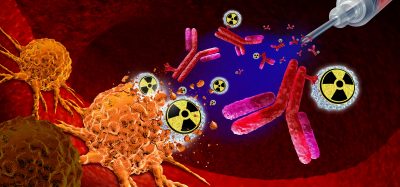The road to safer painkillers: the role of the EP2 receptor
Posted: 25 September 2025 | Drug Target Review | No comments yet
NYU researchers have identified a receptor in prostaglandins that triggers pain without affecting inflammation – which could lead to safer, more targeted pain treatments.


Researchers at the NYU Pain Research Center have pinpointed a receptor in prostaglandins – the hormone-like substances targeted by common painkillers – that causes pain without affecting inflammation. The findings, published in Nature Communications, could lead to the development of more selective drugs that relieve pain while minimising side effects.
Decoupling pain from inflammation
“Inflammation and pain are usually thought to go hand in hand. But being able to block pain and allow inflammation – which promotes healing – to proceed is an important step in improved treatment of pain,” said study author Nigel Bunnett, professor and chair of the Department of Molecular Pathobiology at NYU College of Dentistry and a faculty member in the NYU Pain Research Center.
Non-steroidal anti-inflammatory drugs (NSAIDs), such as ibuprofen and aspirin, are among the most widely used medicines worldwide
Non-steroidal anti-inflammatory drugs (NSAIDs), such as ibuprofen and aspirin, are among the most widely used medicines worldwide – with an estimated 30 billion doses consumed annually in the US alone. While these drugs effectively reduce pain, long-term use can lead to serious risks, including stomach damage and heart, kidney and liver complications.
Biomarkers are redefining how precision therapies are discovered, validated and delivered.
This exclusive expert-led report reveals how leading teams are using biomarker science to drive faster insights, cleaner data and more targeted treatments – from discovery to diagnostics.
Inside the report:
- How leading organisations are reshaping strategy with biomarker-led approaches
- Better tools for real-time decision-making – turning complex data into faster insights
- Global standardisation and assay sensitivity – what it takes to scale across networks
Discover how biomarker science is addressing the biggest hurdles in drug discovery, translational research and precision medicine – access your free copy today
NSAIDs work by blocking enzymes that produce prostaglandins, which reduces both inflammation and pain. However, scientists have long believed that reducing inflammation is necessary to relieve pain – a belief that may overlook inflammation’s protective role.
“Inflammation can be good for you – it repairs and restores normal function,” said study author Pierangelo Geppetti, an adjunct professor at the NYU Pain Research Center. “Inhibiting inflammation with NSAIDs may delay healing and could delay recovery from pain. A better strategy to treat prostaglandin-mediated pain would be to selectively reduce the pain without affecting inflammation’s protective actions.”
The role of EP2 receptor in pain
The study focused on prostaglandin E2 (PGE2), a key mediator of inflammatory pain, in Schwann cells. Schwann cells, located in the peripheral nervous system, play an important role in migraines and other forms of pain.
While previous research suggested the EP4 receptor as the main contributor to inflammatory pain, the NYU team used a more targeted approach and discovered that the EP2 receptor was primarily responsible for pain.
While previous research suggested the EP4 receptor as the main contributor to inflammatory pain, the NYU team used a more targeted approach and discovered that the EP2 receptor was primarily responsible for pain. Localised silencing of the EP2 receptor in Schwann cells eliminated pain responses in mice without affecting inflammation.
“To our great surprise, blocking the EP2 receptor in Schwann cells abolished prostaglandin-mediated pain but the inflammation took its normal course. We effectively decoupled the inflammation from the pain,” said Geppetti.
Further studies in human and mouse Schwann cells confirmed that activating the EP2 receptor sustains pain responses through a pathway independent of inflammatory reactions – underscoring its specific role in pain.
“Antagonism of this ‘druggable’ receptor would thus control pain without the adverse effects of NSAIDs,” said Bunnett.
Looking ahead: targeted pain therapies
The team is continuing preclinical studies to explore how drugs targeting the EP2 receptor could treat pain in conditions like arthritis – which are commonly managed with NSAIDs.
“Selective EP2 receptor antagonists could be very useful. While more research is needed on side effects, especially with giving a drug systemically as a pill, targeted administration that acts locally on an area like a knee joint holds promise,” said Geppetti.
Related topics
Drug Discovery, Drug Discovery Processes, Drug Targets, Neurosciences, Therapeutics, Translational Science
Related organisations
NYU Pain Research Center








